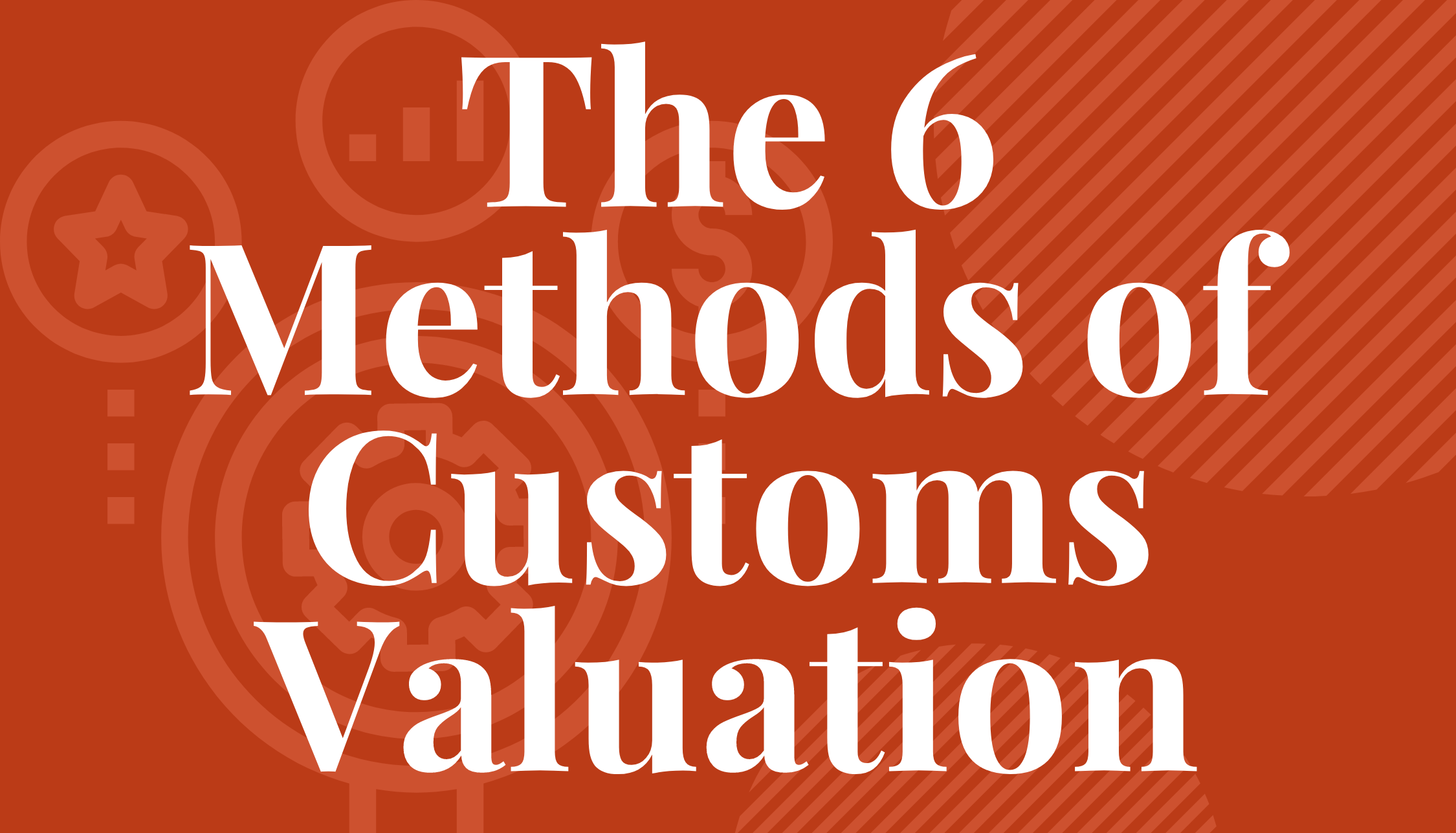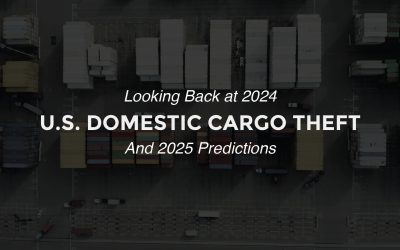Customs valuation is generally determined using transaction value. However, when using transaction value is insufficient, valuation can be determined using 5 other methods.
The 6 Methods of Customs Valuation
- Method 1: Transaction value
- Method 2: Transaction value of identical goods
- Method 3: Transaction value of similar goods
- Method 4: Deductive method
- Method 5: Computed method
- Method 6: Fall-back method
Method 5 can be used before method 4 at the request of the importer but not at the discretion of the Customs officer. All World Trade Organization Members are Members of the Customs Valuation Agreement.
Method 1: Transaction value
Customs valuation is generally based on the actual price of the goods, which is usually shown on the invoice. This price, plus adjustments for certain elements, equals the transaction value. This constitutes the first and most important method of valuation referred to in the Customs Valuation Agreement.
The Customs value equals the transaction value if the following conditions are met:
- Evidence of sale: There must be evidence of a sale for export to the country of importation, like commercial invoices, contracts, or purchase orders.
- No restrictions: There cannot be any restriction on the disposition or use of the goods by the buyer other than restrictions that are:
- Required by law in the country of importation
- Limited to the geographic area in which the goods may be resold
- Do not substantially affect the value of the goods
To utilize transaction value as the valuation method, the price cannot be subject to conditions for which the value for imported goods cannot be determined. These conditions include:
- The seller establishes the price of the goods on the condition that the importer will also buy a certain quantity of other goods.
- The price of the goods depends on the price that the importer sells other goods to the seller.
- The price is established on a form of payment irrelevant to imported goods.
If sufficient information is available, there can be specific adjustments made to the transaction value. This information includes:
- Commissions and brokerage, excluding buying commissions
- Packing and container costs and charges
- Assists
- Royalties and license fees
- Subsequent proceeds
- Cost of transport and insurance
- NOT: costs incurred after importation, like duties, transport, construction, or assembly
If the buyer and seller are related parties, the use of the transaction value is acceptable if the importer demonstrates that:
- The relationship did not influence the price
- The transaction value closely approximates a test value
There have been many cases where Customs has had reasons to doubt the truth or accuracy of declared value. Customs valuation based on the transaction value method is predominantly based on documentation from the importer, and Customs has the right to confirm the truth or accuracy of any documentation. Customs may ask the importer to provide a further explanation for the declared value.
If the reasonable doubt still exists after further information is provided or if there is no response from the importer, Customs may decide that the value cannot be determined using the transaction value method. If Customs decides to use another method for valuation, they must communicate their reasoning to the importer in writing.
Method 2: Transaction value of identical goods
The transaction value is calculated in the same manner on identical goods if the goods are:
- The same in all respects including physical characteristics, quality, and reputation
- Produced in the same country as the goods being valued
- Produced by the producer of the goods being valued
To use this method, identical goods must be imported into the same country as the goods being valued. The goods must also be exported around the same time as the goods being valued.
Some exceptions are accepted:
- If there are no identical goods produced by the same person in the country producing the goods being valued, identical goods produced by someone else in the same country can be taken into account.
- Minor differences in the appearance of goods being valued do not prohibit valuation using otherwise identical goods.
These exceptions exclude imported goods that incorporate engineering or artwork provided by the importer to the producer of goods at little or no charge.
Method 3: Transaction value of similar goods
Transaction value can be calculated using similar goods if:
- Goods closely resemble the goods being valued in terms of materials and characteristics
- Goods perform the same functions and are interchangeable with the goods being valued
- Goods are produced by the same producer of the goods being valued, and the goods are sold to the same country of importation as the goods being valued. The goods must also be exported around the same time as the goods being valued.
Method 4: Deductive value
When the Customs value cannot be determined using the transaction value of the imported goods or identical or similar goods, it will be determined by the unit price that the imported goods or identical or similar goods are sold to an unrelated buyer in the greatest aggregate quantity in the same country of importation.
The greatest aggregate quantity is equal to the price that the greatest number of units are sold to unrelated people at the first commercial level after importation. To determine the greatest aggregate quantity, all sales at a given price and the sum of the units of goods sold at that price are compared to the sum of the units of identical or similar goods sold at any other price. The greatest number of units sold at one price will represent the greatest aggregate quantity, which will be the basis for establishing the Customs value.
The buyer and the seller in the importing country cannot be related, and the sale must take place around the time of importation of the goods being valued. If no sale took place at or about the time of importation, sales up to 90 days after importation of the goods being valued are acceptable.
There may be deductions from the price at the greatest aggregate quantity.
- Commissions, the sum of profits, and general expenses added in connection with sales must be deducted.
- Transport costs and insurance must be deducted from the price of goods when these costs are incurred within the country of importation.
- Customs duties and other taxes payable in the country of importation because of the importation or sale of the goods must be deducted.
- Value added by assembly or further processing must be deducted when applicable.
Method 5: Computed value
Computed value, the most challenging and rarely used method, determines the Customs value using the cost of production of the goods being valued, plus the profit and general expenses reflected in sales of similarly classified goods.
The computed value is the sum of the following elements:
- Production cost: The value of materials, fabrication, and other processing involved in producing the imported goods.
- Materials: raw materials, costs to get the raw materials to the place of production, subassemblies, and prefabricated components that will eventually be assembled.
- Fabrication: the cost of labor, assembly costs when there is an assembly operation instead of the manufacturing process, and indirect costs like factory supervision, plant maintenance, or overtime.
- Packing costs, assists, engineering work, or artwork undertaken in the country of importation would be added.
- Profit and general expenses: usually reflected in export sales of similarly classified goods provided by producers in the country of importation.
- The amount of profit and general expenses have to be taken as a whole.
- General expenses could include rent, electricity, water, or legal fees.
- Other expenses are considered, such as the cost of insurance, transport, loading, unloading, and handling charges associated with transporting the imported goods to the place of importation.
Method 6: Fall-back method
When the Customs value cannot be determined using any of the previous methods, it can be determined using reasonable means consistent with the principles and general provisions of the Customs Valuation Agreement and based on data available in the country of importation. This method must be based on previously determined values but has a reasonable degree of flexibility.
Under the fall-back method, the Customs value must NOT be based on:
- The selling price of goods manufactured in the importing country.
- The price of goods on the domestic market of the country of exportation. This would go against the principle that valuation procedures should not be used to combat dumping.
- The cost of production other than computed values which have been determined for identical or similar goods. The valuation must be determined based on data available in the country of importation.
- The price of goods for export to a third country. Two export markets must be treated as separate, and the price to one should not control the Customs value in the other.
- Minimum Customs value.
- Arbitrary or fictitious values.







![[Webinar] How Could Changes to De Minimis Impact Your Company?](https://traderiskguaranty.com/trgpeak/wp-content/uploads/2025/05/trg-how-de-minimis-impacts-customs-bond-webinar-400x250.png)